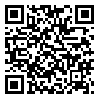BibTeX | RIS | EndNote | Medlars | ProCite | Reference Manager | RefWorks
Send citation to:
URL: http://tumj.tums.ac.ir/article-1-7408-en.html
2- Department of Biology, University of Guilan, Rasht, Iran. ,
3- Department of Midwifery, Guilan University of Medical Science, Rasht, Iran.
Background: Anembryonic gestation (blighted ovum) is the most common identifiable pathology in the first trimester of pregnancy, always leads to miscarriage. Early pregnancy failures from blighted ovum are often due to chromosomal abnormalities and a poor quality of sperm or egg. Oxidative stresses as a factor of disturbance balance between the production of free radicals and antioxidant defenses is involved in the pathogenesis of many diseases, including mouth and throat cancer and cardiovascular disease. Catalase is one of the defensive systems against damages caused by oxidative stress in human. The aim of this study was to compare the activity of salivary catalase in women with blighted ovum and women with history of normal pregnancy.
Methods: This case-control study was performed on 34 patient women with blighted ovum and 34 healthy women as a control group. The study was performed in biochemistry laboratory at the University of Guilan from October 2015 to July 2015. The age range was 20-44 years and 18-45 years in patient and control groups, respectively. Unstimulated saliva samples were collected using spitting method. Catalase activity was measured by evaluating the constant rate of hydrogen peroxide decomposition in patient and control groups.
Results: The patient group matched with healthy subjects in average age and having no other diseases history. The biochemical enzymatic assays indicate that the average catalase activities of saliva in patient and control groups were 14.47±3.8 and 16.42±3.48, respectively. Therefore, the catalase activity was significantly reduced in patient group as compared to the control group (P=0.03).
Conclusion: The obtained results suggested that oxidative stress plays an important role in the pathogenesis of blighted ovum. Therefore, determination the activity of other antioxidant enzymes, in addition to catalse, may be used as a marker for diagnosis of blighted ovum. More studies with larger studied-population is recommended to confidently comment on the results of this study.
| Rights and permissions | |
 |
This work is licensed under a Creative Commons Attribution-NonCommercial 4.0 International License. |





